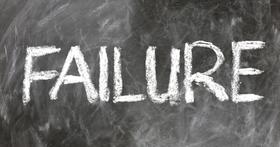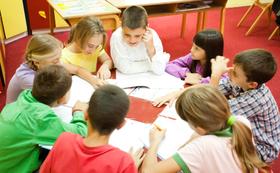Top Rankings
Norristown Area School District ranks among the top 20% of public school district in Pennsylvania for:
Category
Attribute
Diversity
Most diverse schools (Top 1%)
Community Size
Largest student body (number of students) (Top 1%)
For the 2025-26 school year, there are 2 public high schools serving 2,428 students in Norristown Area School District. This district's average high testing ranking is 2/10, which is in the bottom 50% of public high schools in Pennsylvania.
Public High Schools in Norristown Area School District have an average math proficiency score of 18% (versus the Pennsylvania public high school average of 30%), and reading proficiency score of 44% (versus the 58% statewide average).
Public High School in Norristown Area School District have a Graduation Rate of 82%, which is less than the Pennsylvania average of 88%.
The school with highest graduation rate is Norristown Area High School, with 85% graduation rate. Read more about public school graduation rate statistics in Pennsylvania or national school graduation rate statistics.
Minority enrollment is 89% of the student body (majority Hispanic), which is more than the Pennsylvania public high school average of 39% (majority Black and Hispanic).
Overview
This School District
This State (PA)
# Schools
12 Schools
790 Schools
# Students
7,641 Students
641,839 Students
# Teachers
546 Teachers
46,794 Teachers
Student-Teacher Ratio
14:1
14:1
Student By Grade
District Rank
Norristown Area School District, which is ranked within the bottom 50% of all 678 school districts in Pennsylvania (based off of combined math and reading proficiency testing data) for the 2022-2023 school year.
The school district's graduation rate of 82% has increased from 80% over five school years.
Overall District Rank
#538 out of 685 school districts
(Bottom 50%)
(Bottom 50%)
Math Test Scores (% Proficient)
21%
38%
Reading/Language Arts Test Scores (% Proficient)
31%
55%
Science Test Scores (% Proficient)
42%
57%
Graduation Rate
82%
87%
Students by Ethnicity:
Diversity Score
0.65
0.59
% American Indian
n/a
n/a
% Asian
1%
4%
% Hispanic
50%
15%
% Black
29%
15%
% White
11%
61%
% Hawaiian
n/a
n/a
% Two or more races
9%
5%
All Ethnic Groups
District Revenue and Spending
The revenue/student of $22,796 in this school district is less than the state median of $23,696. The school district revenue/student has stayed relatively flat over four school years.
The school district's spending/student of $20,337 is less than the state median of $23,119. The school district spending/student has stayed relatively flat over four school years.
Total Revenue
$174 MM
$39,541 MM
Spending
$155 MM
$38,578 MM
Revenue / Student
$22,796
$23,696
Spending / Student
$20,337
$23,119
Best Norristown Area School District Public High Schools (2025-26)
School
(Math and Reading Proficiency)
(Math and Reading Proficiency)
Location
Quick Facts
Rank: #11.
Norristown Area High School
(Math: 18% | Reading: 44%)
Rank:
Rank:
3/
Bottom 50%10
1900 Eagle Dr
Norristown, PA 19403
(610) 630-5090
Norristown, PA 19403
(610) 630-5090
Gr: 9-12 | 2,273 students Student-teacher ratio: 17:1 Minority enrollment: 89%
Rank: #22.
Roosevelt Campus Of The Norristown Area High School
(Math: ≤10% | Reading: ≤20% )
Rank:
Rank:
1/
Bottom 50%10
1161 Markley St
Norristown, PA 19401
(610) 275-9720
Norristown, PA 19401
(610) 275-9720
Gr: 9-12 | 155 students Student-teacher ratio: 12:1 Minority enrollment: 93%
Recent Articles

School Vouchers: Updated Pros and Cons (2025 Review)
Comprehensive 2025 analysis of school vouchers, weighing benefits and challenges for families, funding, outcomes, and policy directions.

Benefits and Drawbacks of Homework in 2025
Explore updated 2025 insights on homework鈥檚 benefits, drawbacks, mental health impact, best practices, and policy trends in U.S. public schools.

Charter Schools vs Public Schools 2025: Key Differences & Trends
Explore updated 2025 insights comparing charter schools vs public schools, enrollment, academic outcomes, funding, and real-world examples for families and educators.





